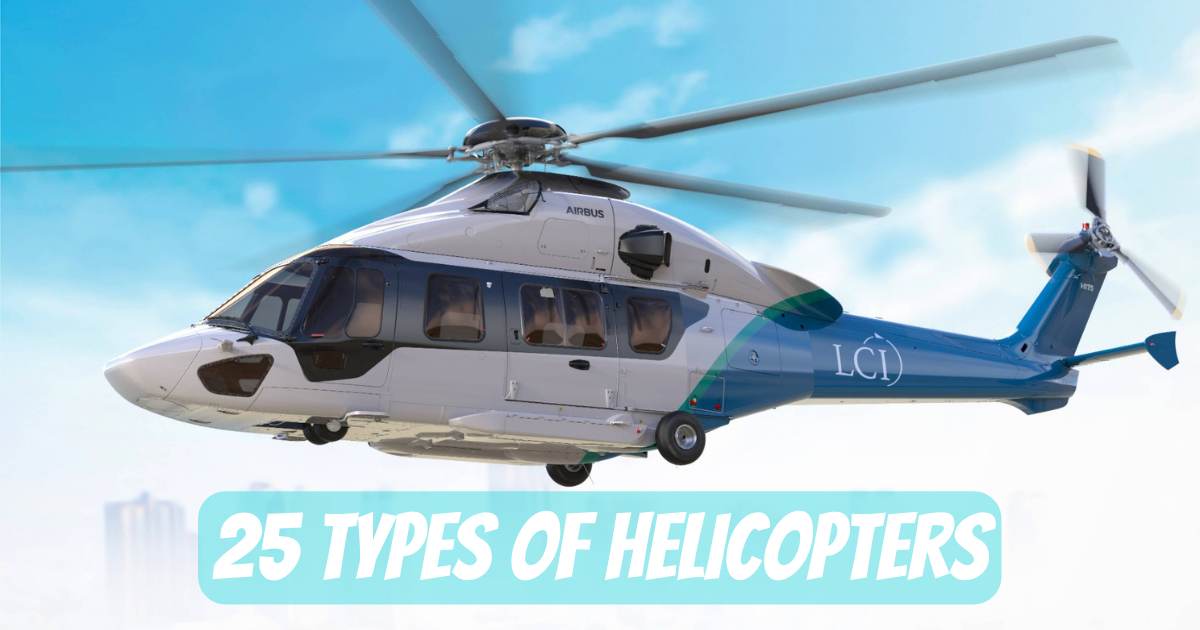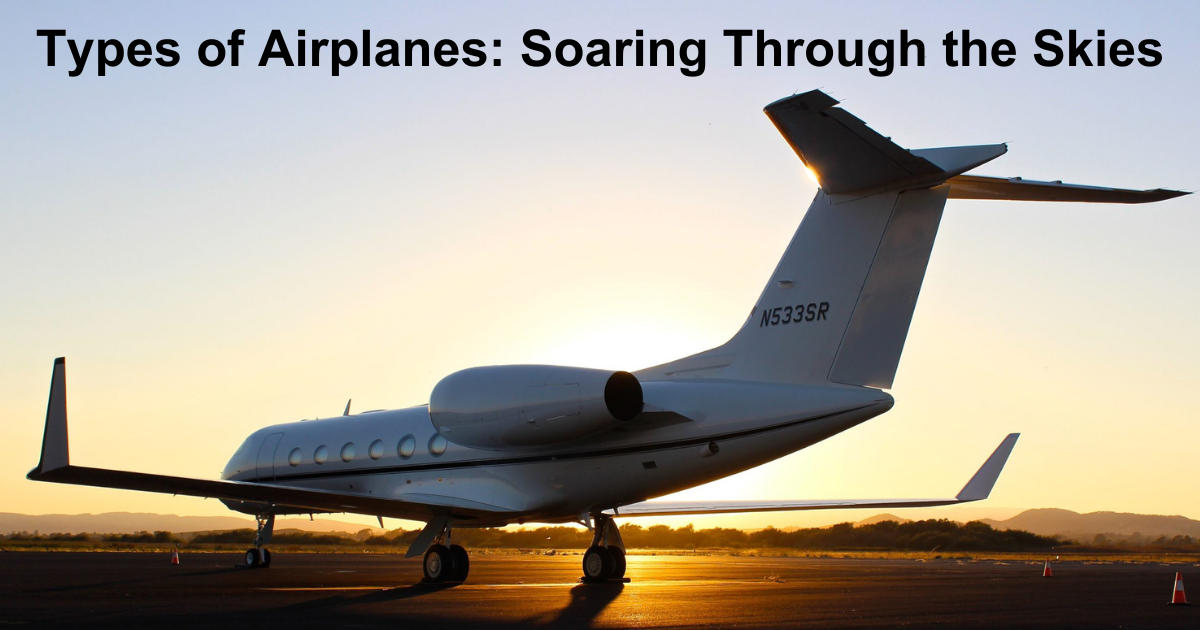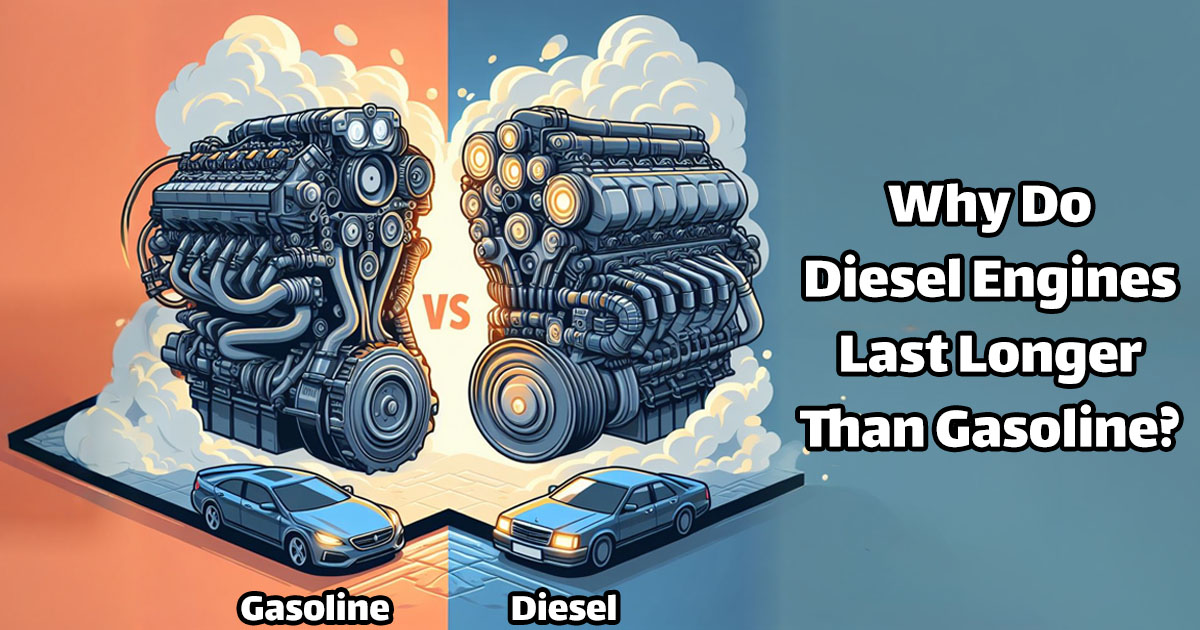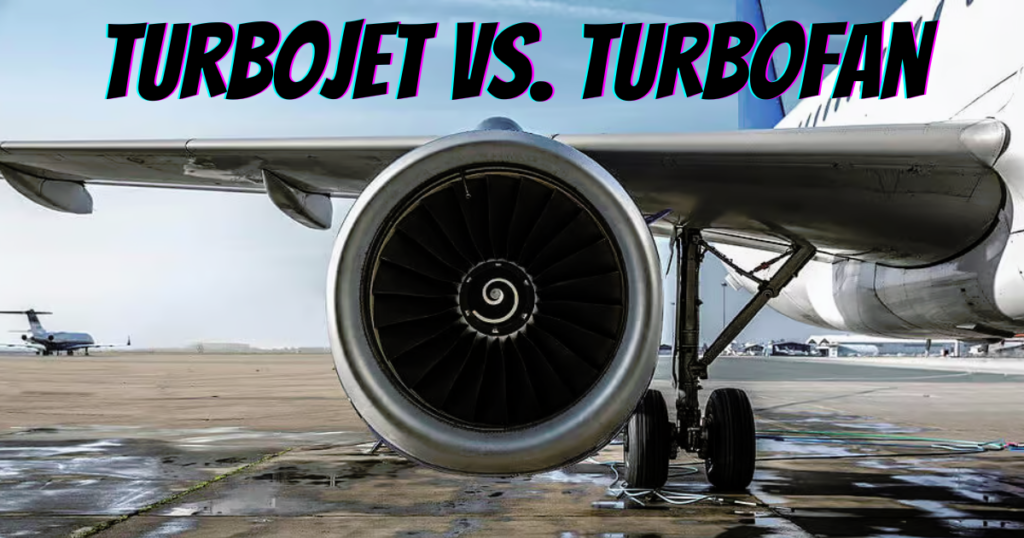
How are turbojet and turbofan different from each other?
The primary difference between a turbofan and a turbojet is that, with a turbojet, all of the air goes into the engine’s core (the compressor, combustion chamber, and turbine). A turbofan is similar to a turbojet in many ways, but it has a big fan at the front of the engine.
Some of the air ‘bypasses’ the engine’s core components (the compressor, combustion chamber, and turbine) as it flows around the engine. In a turbofan engine, the fan and engine core both contribute to generating thrust, whereas in a turbojet engine, the acceleration of flow through the engine core produces all of the thrust.
Turbojet Vs. Turbofan: What are the construction differences?
Construction of a Turbojet:
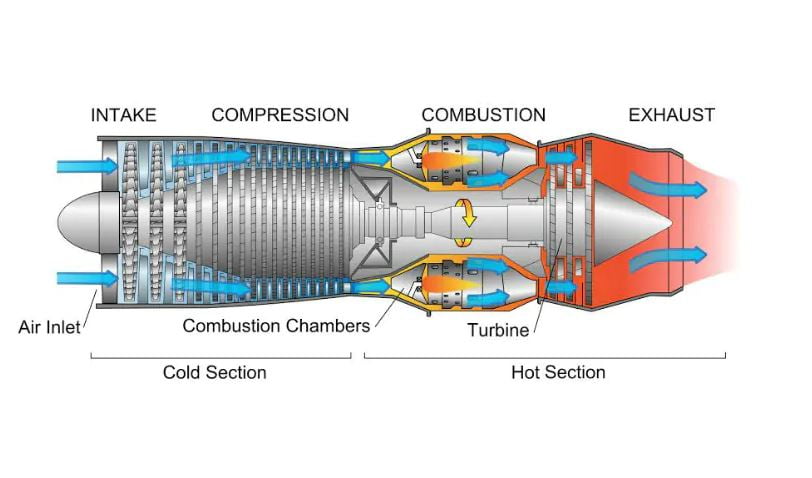
The primary components of a turbojet usually consist of an air inlet that sends the flow into a compressor. The flow is delivered into the combustion chamber after passing through the compressor (where the flow pressure and temperature are enhanced). High temperature and high-pressure gas are accelerated and expanded in the nozzle to produce thrust after combustion.
In a turbojet, the compressor is propelled by the turbine. Exhaust gases provide all of the energy for turbojets.
Because there is no ‘cool’ flow around the core of a turbojet, there is zero bypass flow, which causes the air to depart at high speed. Turbojets are best suited for supersonic flight at high speeds, where they are most effective. Turbojets are often used on fast planes like Concorde.
Key elements of a Turbojet:
The main elements of a Turbojet include:
- Inlet
- Compressor
- Combustion chamber
- Turbine driving compressor
- Nozzle
Construction of a Turbofan:
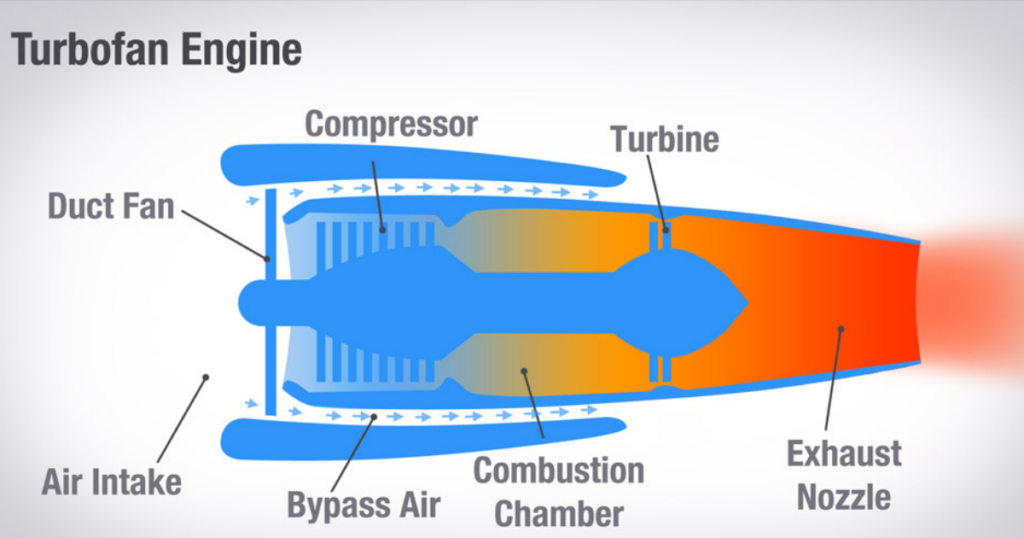
On the other hand, a turbofan has an air intake that is connected to a fan. The air then exits the fan via two different routes: a “hot path” or core path and a “cold path” or bypass path. The amount of airflow that circumvents the cold path varies from 30 to 80 percent depending on the size of the fan and the engine’s bypass ratio.
The “hot stream” and “cold stream” are combined at the engine’s rear in the nozzle area after the “cold” air is routed around the central engine core. Like a turbojet, a turbofan engine’s hot path involves a compressor, a combustion chamber, a turbine, and a nozzle before the airstream exits the engine. In a turbofan engine, the turbine powers both the compressor and the fan.
Key elements of a Turbofan:
- Air intake
- Fan
- Compressor
- Combustion chamber
- Turbine driving compressor & fan
- Nozzle
What is the Bypass Ratio?
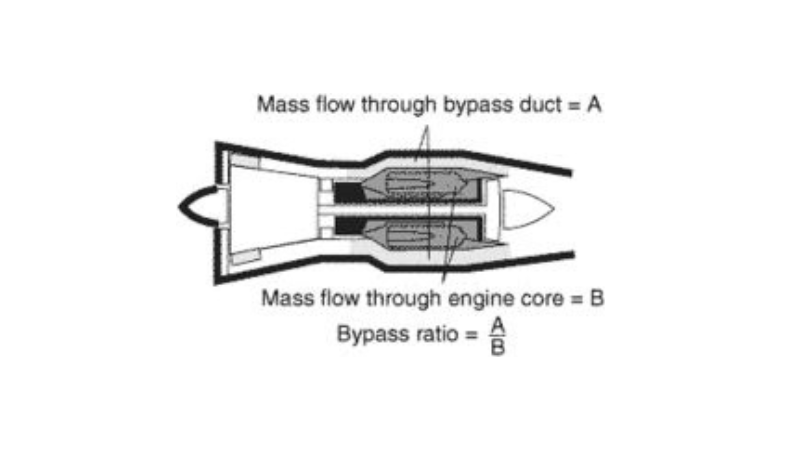
The bypass ratio is the ratio of airflow through the ‘core’ of the engine to the quantity of airflow bypassing the engine. Bypass ratio 5 means there is 5 times as much flow around the core as through it (compressor > combustor > turbine).
What is the Significance of Bypass Ratio?
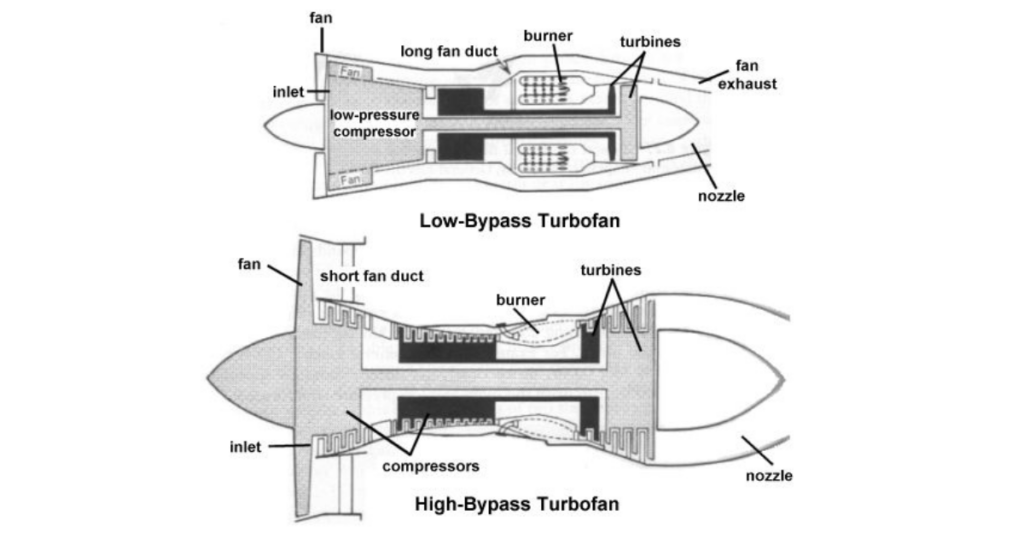
Compared to a turbojet engine, an engine with a fan and air bypassing the core of the main engine uses less fuel while producing the same amount of thrust. Basically, a low bypass ratio indicates that the engine’s core produces more thrust than the bypass. In a high bypass engine, the fan generates greater thrust than the core.
Turbojets do not have a bypass. Turbojet thrust is created by rapidly accelerating a tiny volume of air. On the other hand, turbofans generate thrust by accelerating a large volume of air at a low velocity. A turbofan produces a big volume of air more gradually, but a turbojet releases a smaller volume of air more quickly, which is less effective in producing thrust.
Turbojet Vs. Turbofan: Noise Differences?
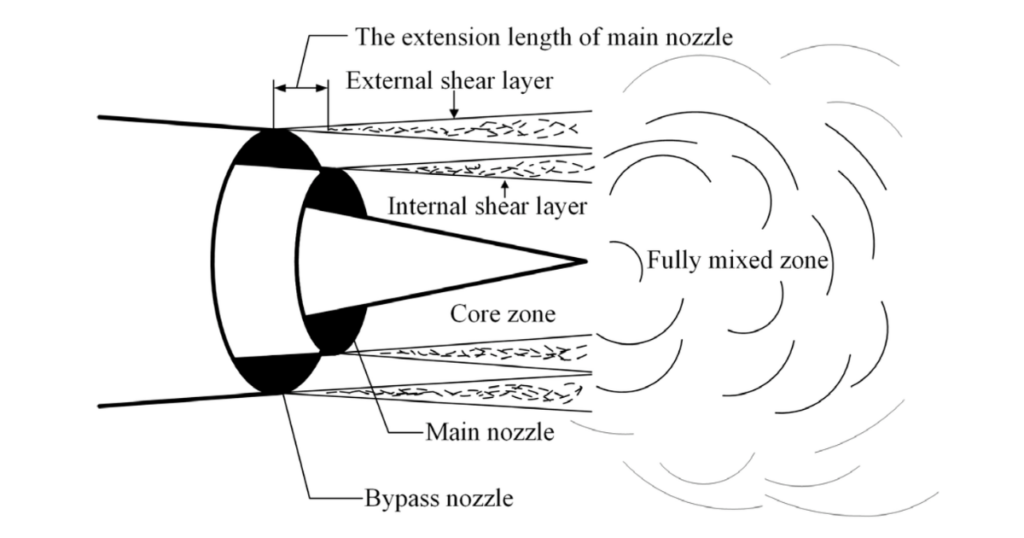
Compared to turbojet engines, turbofan engines are much quieter. The engine is usually quieter when the bypass ratio is higher. Changes in pressure, temperature, and speed between the surroundings and the jet flow cause jet engines to make noise.
High bypass turbofans are significantly quieter than conventional turbofans mostly because the airflow is much slower after being propelled through the engine. In comparison to a turbofan, a turbojet has a flow velocity that is significantly higher at the exhaust.
In a turbofan, the variations in temperature and pressure at the exhaust are less significant than in a turbojet, resulting in a further reduction in noise. Modern turbofans also have acoustic liners to lessen noise. For example, the 747-8 and Dreamliner engines have chevrons or sawtooth designs that help mix the bypass engine flow with the environment and lower noise.
Turbojet Vs. Turbofan: Difference in Efficiency
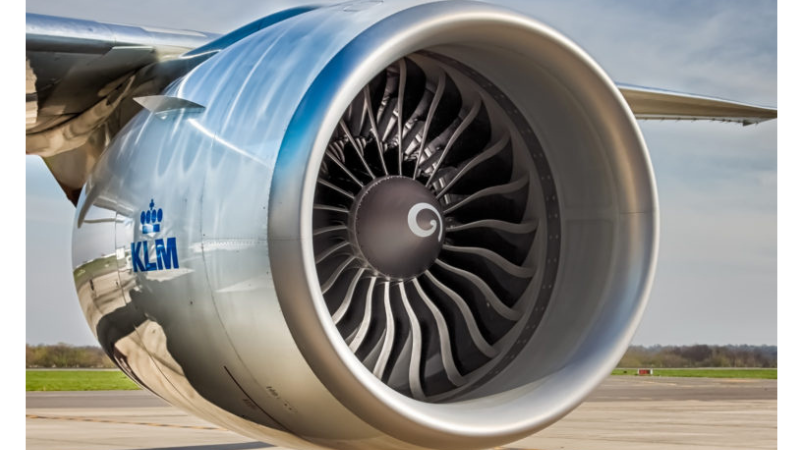
Turbojets were designed to enhance efficiency and are most effective at subsonic speeds of approximately 300 to 600 mph. The turboprop engine is the king of efficiency. The turboprop is essentially a turbojet engine driving a propeller through a transmission.
As the entire propeller and core are in free air, turboprops steal the show because they basically have an infinite amount of “bypass” ratio. Due to their significantly higher fuel efficiency, slower turboprop aircraft have replaced jet aircraft on shorter routes where a high top speed is not essential.
Similar to turboprops, turbofan engines use a turbine’s power to drive a fan. Even though the turbine drives a turbofan engine’s massive fan, the engine’s improved propulsive efficiency and fuel consumption more than compensate for the mechanical losses.
In high bypass turbofans, the fan/ducted component of the flow can account for 70% or more of the thrust.
Low speeds cause turbojets to perform inefficiently. Turbojets are best suited for high-speed, supersonic flying. Turbojet engines can operate more efficiently by raising the compression ratio or combustion temperature.
High-speed flying raises the temperature and ram pressures at the air intake, further increasing efficiency.
Due to the high-speed turbine exhaust gas and noise, turbojets are not good for subsonic aircraft because they lose energy at the exhaust.
Uses of Turbojets and Turbofans:

Turbofan engines are primarily utilized in both civilian and military applications on high-speed subsonic jet aircraft. On the other hand, turbojets have supersonic uses. For example, the renowned Concorde aircraft used Rolls Royce 593 Olympus turbojet engines equipped with reheat or afterburners to maintain a cruising speed of Mach 2 at the height of 60,000 feet.
The largest twin-engined passenger jet in the world, the Boeing 777-300ER, is equipped with a GE90-115B turbofan jet engine and can transport 386 passengers across distances of 7,825 nautical miles (14,490 kilometers).
Turbofans Vs. Turbojets: which came first?
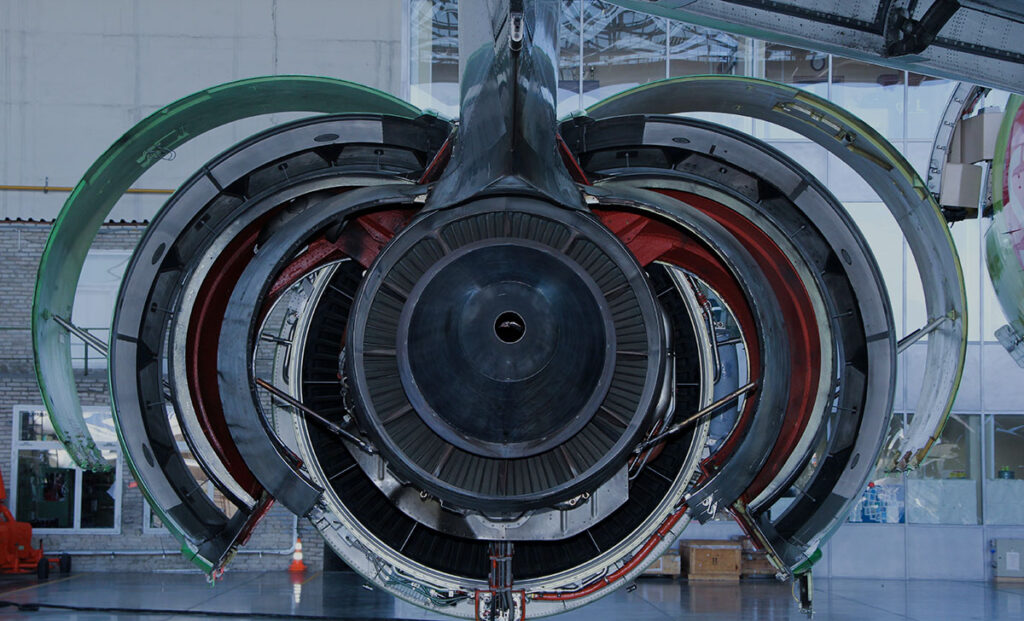
In 1928, Frank Whittle made the first breakthrough in the turbojet. Heinkel He 178 was the first plane to fly using a turbojet engine. However, the first British jet engine flight was conducted by the Gloster E.28/39 Gloster Whittle in 1941.
Turbojet Vs. Turbofan: Which One is Better?
The turbofan engine has evolved from the traditional turbojet and has become the preferred choice for airplane designers in modern times, particularly when efficiency during subsonic flight is a priority.
When it comes to modern military aircraft that require both high performance and long flight durations, low bypass turbofans are favored due to their efficiency, high exhaust velocities, and compact design.
The turbojet engine remains the dominant choice when necessary for an ultra-fast and extremely high-altitude flight. It excels at compressing the thin air of the stratosphere more effectively than a turbofan.
So, the choice among a turbojet, low bypass turbofan, and high bypass turbofan is just a matter of their application. In the above article, we have compared their construction, uses, and efficiency in detail. Still, if you have any other queries, please let us know in the comments below.

